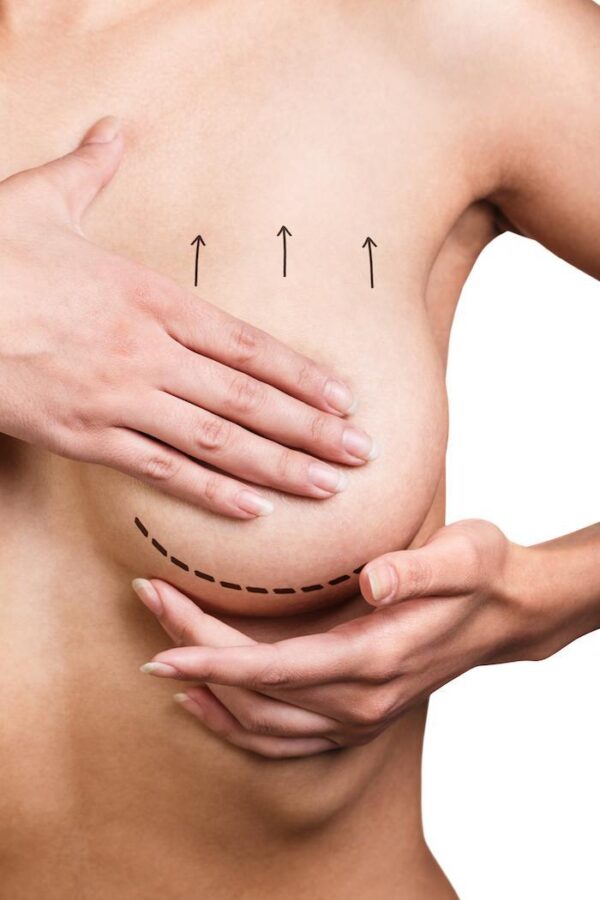
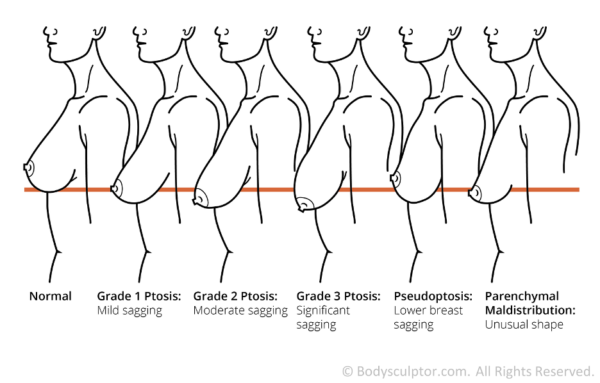
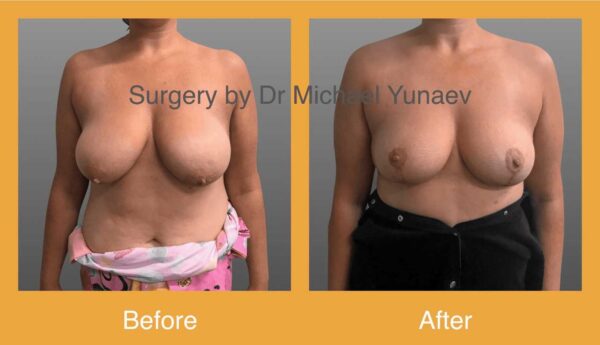
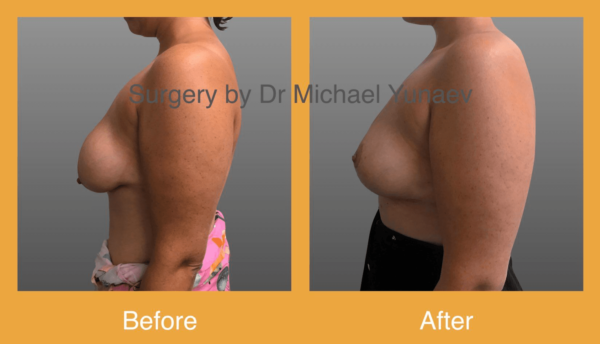
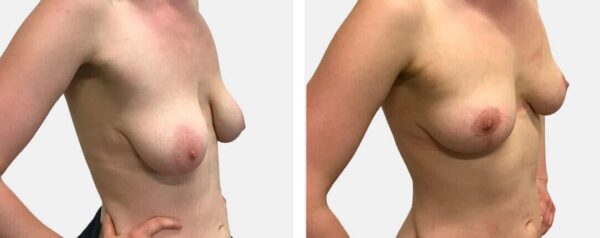
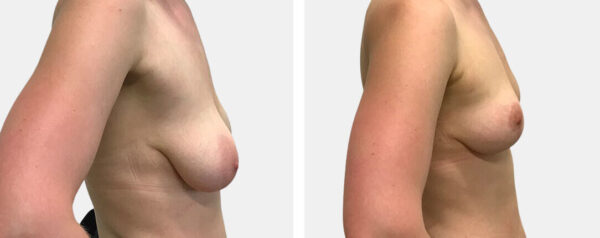
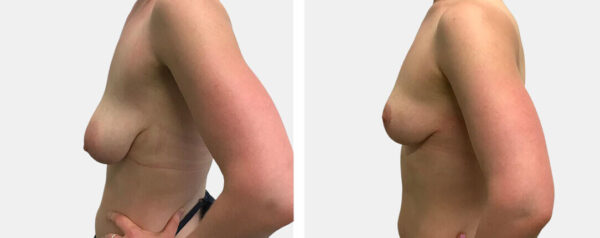
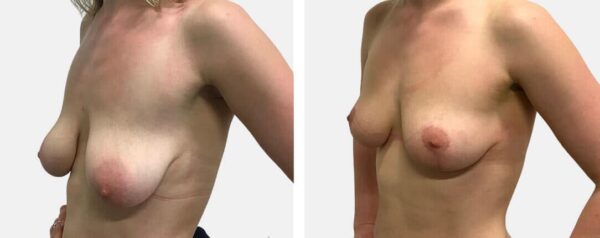


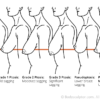
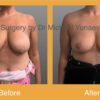
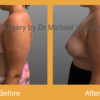
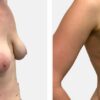
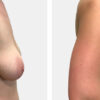
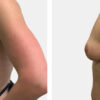
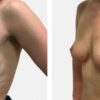
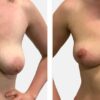

Free
Embark on a transformative journey with our exceptional range of medical treatments. As a leading medical tour operator, we offer a comprehensive selection of world-class treatments and procedures to address your unique healthcare needs. From advanced surgeries to cutting-edge therapies, our team of experienced professionals is dedicated to providing top-notch care and ensuring your comfort and satisfaction. Discover a new level of healthcare excellence with our tailored treatment options. Book now to start your journey towards a healthier and happier you.
The inverted T or anchor breast lift is a surgical procedure designed to address moderate to severe breast sagging. Here is an explanation of the procedure based on the information from the search results:
Incision Pattern: The inverted T or anchor breast lift involves three main incisions. The first incision is made around the areola, the second extends vertically from the bottom outer edge of the areola to the breast crease, and the third incision is hidden in the horizontal crease of the inframammary fold. This incision pattern allows the surgeon to remove excess skin and reshape the breast.
Tissue Removal and Reshaping: After making the incisions, the surgeon removes a section of skin and breast tissue. The remaining breast tissue is then lifted and reshaped to achieve a more youthful and lifted appearance. The nipple and areola complex are repositioned to a higher position on the breast mound.
Surgical Technique: The inverted T or anchor breast lift is typically performed under general anesthesia, meaning you will be unconscious throughout the procedure. The surgery aims to restore a more youthful breast shape and contour by addressing sagging and excess skin.
Scar Formation: The inverted T or anchor breast lift technique results in an upside-down T-shaped scar. The scar is typically located around the areola, extends vertically down to the breast crease, and continues horizontally along the inframammary fold. Scar appearance and healing can vary among individuals, and proper scar management techniques may be recommended by the surgeon to minimize their visibility.
Suitability: The inverted T or anchor breast lift is often recommended for individuals with moderate to severe breast sagging, especially those who have lost a significant amount of weight or experienced breast deflation after pregnancy. It allows for the removal of a significant amount of excess skin and sagging tissue.
The inverted T or anchor breast lift is suitable for individuals who are experiencing moderate to severe breast sagging. It is often recommended for those who have lost a significant amount of weight or have experienced breast deflation after pregnancy. The procedure aims to reduce sagging, tighten the breasts, and create a more youthful appearance 1.
The inverted T or anchor breast lift is particularly useful for women with marked breast skin excess. It allows for the removal of a significant amount of excess skin and sagging tissue, resulting in a reshaped and lifted breast 2. This technique is also suitable for individuals who desire precise control over the shape and position of the areolas and nipples after surgery 3.
The inverted T or anchor breast lift may not be suitable for everyone. Here are some factors to consider:
Minimal Sagging: The inverted T or anchor breast lift is typically recommended for individuals with moderate to severe breast sagging. If you have minimal sagging or only require a slight lift, other breast lift techniques may be more appropriate.
Desire for Minimal Scarring: The inverted T or anchor breast lift technique results in an upside-down T-shaped scar. If you have concerns about visible scarring or are looking for a procedure with minimal scarring, alternative breast lift techniques that involve shorter incisions may be more suitable.
Limited Nipple and Areola Positioning: The inverted T or anchor breast lift allows for precise control over the shape and position of the nipples and areolas. However, if you have specific preferences for nipple and areola positioning that cannot be achieved with this technique, alternative breast lift methods may be more appropriate.
Medical Considerations: Certain medical conditions or factors may make the inverted T or anchor breast lift less suitable. It’s important to discuss your medical history, including any underlying health conditions, with a qualified plastic surgeon to determine if this procedure is safe for you.
Individual Preferences: Ultimately, the choice of breast lift technique depends on your individual goals, preferences, and the recommendations of your plastic surgeon. It’s important to have a thorough consultation with a qualified surgeon who can assess your specific needs and provide personalized recommendations.
Based on the information from the search results, here are some advantages of the inverted T or anchor breast lift:
Effective for Sagging: The inverted T or anchor breast lift is particularly suitable for individuals with moderate to severe breast sagging. It can effectively reduce sagging and tighten the breasts, resulting in a more youthful appearance 1.
Significant Skin and Tissue Removal: This technique allows for the removal of a significant amount of excess skin and sagging tissue. It is especially useful for individuals who have experienced significant weight loss or breast deflation after pregnancy.
Precise Control over Nipple and Areola Positioning: The inverted T or anchor breast lift technique provides precise control over the shape and position of the nipples and areolas. This allows the surgeon to reposition them to a higher position on the breast mound, creating a more aesthetically pleasing outcome 1.
Potential Preservation of Nipple Sensation: The inverted T or anchor breast lift has the potential to preserve nipple sensation. By creating and preserving a pedicle, which contains the original blood and nerve supply, the nipple and areola complex can maintain sensation 2.
Suitable for Combination Procedures: The inverted T or anchor breast lift can be combined with other procedures such as breast reduction, allowing for comprehensive reshaping and resizing of the breasts 3.
Based on the information from the search results, here are some potential complications associated with the inverted T or anchor breast lift:
Scarring: The inverted T or anchor breast lift technique results in an upside-down T-shaped scar. While scar appearance and healing can vary among individuals, it’s important to note that scarring is an inherent risk of the procedure.
Wound Healing Issues: As with any surgical procedure, there is a risk of wound healing issues such as infection, delayed wound healing, or poor wound closure. Following post-operative care instructions provided by the surgeon can help minimize these risks.
Changes in Nipple Sensation: Although the inverted T or anchor breast lift technique has the potential to preserve nipple sensation, there is still a risk of temporary or permanent changes in nipple sensation. Some individuals may experience increased or decreased nipple sensitivity after the procedure.
Asymmetry: There is a possibility of asymmetry in breast shape, size, or nipple position following the inverted T or anchor breast lift. Surgeons strive for symmetry, but individual healing and anatomical variations can affect the final outcome.
Bleeding and Hematoma: While rare, there is a risk of bleeding or hematoma formation (accumulation of blood) after the surgery. Proper surgical techniques and post-operative care can help minimize these risks.
Anesthesia Risks: The inverted T or anchor breast lift is typically performed under general anesthesia. Like any surgical procedure involving anesthesia, there are inherent risks associated with it. These risks can be discussed with the anesthesiologist prior to the surgery.
Based on the information from the search results, here are some aspects of preoperative care for the inverted T or anchor breast lift:
Consultation: The first step in the preoperative care process is to schedule a consultation with a qualified plastic surgeon. During this consultation, you will discuss your goals, expectations, medical history, and any concerns you may have. The surgeon will evaluate your breast shape, size, degree of sagging, and determine if you are a suitable candidate for the inverted T or anchor breast lift.
Medical Evaluation: Before undergoing surgery, you may be required to undergo a thorough medical evaluation. This evaluation may include a physical examination, blood tests, and other diagnostic tests to ensure that you are in good health and able to undergo the procedure safely.
Discussion of Risks and Benefits: The surgeon will discuss the potential risks and benefits of the inverted T or anchor breast lift with you. It’s important to have a clear understanding of what to expect from the procedure and to address any concerns or questions you may have.
Preparation Instructions: The surgeon will provide you with specific preoperative instructions to follow. These instructions may include guidelines on medication use, smoking cessation, and dietary restrictions. It’s important to follow these instructions closely to optimize your safety and surgical outcomes.
Preoperative Testing: Depending on your medical history and the surgeon’s recommendations, you may be required to undergo preoperative testing such as blood work, imaging studies, or an electrocardiogram (ECG). These tests help ensure that you are in good health for the surgery.
Medication Adjustments: The surgeon may provide instructions regarding the use of certain medications before the surgery. This may include avoiding medications that can increase the risk of bleeding or adjusting the dosage of medications you are currently taking.
Preoperative Lifestyle Changes: It may be recommended to make certain lifestyle changes before the surgery. This can include maintaining a healthy diet, engaging in regular exercise, and avoiding habits such as smoking or excessive alcohol consumption, as they can impact your surgical outcomes and recovery.
After undergoing an inverted T or anchor breast lift, proper postoperative care is crucial for optimal healing and recovery. Here are some aspects of postoperative care that may be involved:
Recovery Facility: Depending on the extent of the surgery and your surgeon’s recommendations, you may need to spend the initial recovery period in a specialized recovery facility or hospital. This allows for close monitoring and immediate medical attention if needed.
Pain Management: Your surgeon will prescribe pain medication to manage any discomfort or pain during the initial recovery period. It’s important to take the medication as directed and report any severe or prolonged pain to your surgeon.
Compression Garment: You will likely be instructed to wear a compression garment or surgical bra to provide support to the breasts and minimize swelling. Follow your surgeon’s instructions regarding the duration and proper use of the compression garment.
Wound Care: Proper wound care is essential for preventing infection and promoting healing. Your surgeon will provide specific instructions on how to clean and care for your incisions. This may include keeping the incisions clean and dry, applying antibiotic ointment, and changing dressings as needed.
Activity Restrictions: It’s important to avoid strenuous activities, heavy lifting, and exercise for a certain period of time as advised by your surgeon. Gradually reintroduce physical activities based on your surgeon’s recommendations.
Follow-up Appointments: Your surgeon will schedule follow-up appointments to monitor your healing progress. Attend these appointments as scheduled and discuss any concerns or questions you may have.
Scar Management: Your surgeon may provide recommendations for scar management, such as using silicone sheets or gels, massaging the scars, or applying scar creams. Follow your surgeon’s instructions to help minimize the appearance of scars over time.
Support System: Having a support system in place during your recovery can be beneficial. Reach out to family and friends for emotional support and assistance with daily activities as needed.
Only logged in customers who have purchased this product may leave a review.
The inverted T or anchor breast lift is a surgical procedure designed to address moderate to severe breast sagging. Here is an explanation of the procedure based on the information from the search results:
Incision Pattern: The inverted T or anchor breast lift involves three main incisions. The first incision is made around the areola, the second extends vertically from the bottom outer edge of the areola to the breast crease, and the third incision is hidden in the horizontal crease of the inframammary fold. This incision pattern allows the surgeon to remove excess skin and reshape the breast.
Tissue Removal and Reshaping: After making the incisions, the surgeon removes a section of skin and breast tissue. The remaining breast tissue is then lifted and reshaped to achieve a more youthful and lifted appearance. The nipple and areola complex are repositioned to a higher position on the breast mound.
Surgical Technique: The inverted T or anchor breast lift is typically performed under general anesthesia, meaning you will be unconscious throughout the procedure. The surgery aims to restore a more youthful breast shape and contour by addressing sagging and excess skin.
Scar Formation: The inverted T or anchor breast lift technique results in an upside-down T-shaped scar. The scar is typically located around the areola, extends vertically down to the breast crease, and continues horizontally along the inframammary fold. Scar appearance and healing can vary among individuals, and proper scar management techniques may be recommended by the surgeon to minimize their visibility.
Suitability: The inverted T or anchor breast lift is often recommended for individuals with moderate to severe breast sagging, especially those who have lost a significant amount of weight or experienced breast deflation after pregnancy. It allows for the removal of a significant amount of excess skin and sagging tissue.
The inverted T or anchor breast lift is suitable for individuals who are experiencing moderate to severe breast sagging. It is often recommended for those who have lost a significant amount of weight or have experienced breast deflation after pregnancy. The procedure aims to reduce sagging, tighten the breasts, and create a more youthful appearance 1.
The inverted T or anchor breast lift is particularly useful for women with marked breast skin excess. It allows for the removal of a significant amount of excess skin and sagging tissue, resulting in a reshaped and lifted breast 2. This technique is also suitable for individuals who desire precise control over the shape and position of the areolas and nipples after surgery 3.
The inverted T or anchor breast lift may not be suitable for everyone. Here are some factors to consider:
Minimal Sagging: The inverted T or anchor breast lift is typically recommended for individuals with moderate to severe breast sagging. If you have minimal sagging or only require a slight lift, other breast lift techniques may be more appropriate.
Desire for Minimal Scarring: The inverted T or anchor breast lift technique results in an upside-down T-shaped scar. If you have concerns about visible scarring or are looking for a procedure with minimal scarring, alternative breast lift techniques that involve shorter incisions may be more suitable.
Limited Nipple and Areola Positioning: The inverted T or anchor breast lift allows for precise control over the shape and position of the nipples and areolas. However, if you have specific preferences for nipple and areola positioning that cannot be achieved with this technique, alternative breast lift methods may be more appropriate.
Medical Considerations: Certain medical conditions or factors may make the inverted T or anchor breast lift less suitable. It’s important to discuss your medical history, including any underlying health conditions, with a qualified plastic surgeon to determine if this procedure is safe for you.
Individual Preferences: Ultimately, the choice of breast lift technique depends on your individual goals, preferences, and the recommendations of your plastic surgeon. It’s important to have a thorough consultation with a qualified surgeon who can assess your specific needs and provide personalized recommendations.
Based on the information from the search results, here are some advantages of the inverted T or anchor breast lift:
Effective for Sagging: The inverted T or anchor breast lift is particularly suitable for individuals with moderate to severe breast sagging. It can effectively reduce sagging and tighten the breasts, resulting in a more youthful appearance 1.
Significant Skin and Tissue Removal: This technique allows for the removal of a significant amount of excess skin and sagging tissue. It is especially useful for individuals who have experienced significant weight loss or breast deflation after pregnancy.
Precise Control over Nipple and Areola Positioning: The inverted T or anchor breast lift technique provides precise control over the shape and position of the nipples and areolas. This allows the surgeon to reposition them to a higher position on the breast mound, creating a more aesthetically pleasing outcome 1.
Potential Preservation of Nipple Sensation: The inverted T or anchor breast lift has the potential to preserve nipple sensation. By creating and preserving a pedicle, which contains the original blood and nerve supply, the nipple and areola complex can maintain sensation 2.
Suitable for Combination Procedures: The inverted T or anchor breast lift can be combined with other procedures such as breast reduction, allowing for comprehensive reshaping and resizing of the breasts 3.
Based on the information from the search results, here are some potential complications associated with the inverted T or anchor breast lift:
Scarring: The inverted T or anchor breast lift technique results in an upside-down T-shaped scar. While scar appearance and healing can vary among individuals, it’s important to note that scarring is an inherent risk of the procedure.
Wound Healing Issues: As with any surgical procedure, there is a risk of wound healing issues such as infection, delayed wound healing, or poor wound closure. Following post-operative care instructions provided by the surgeon can help minimize these risks.
Changes in Nipple Sensation: Although the inverted T or anchor breast lift technique has the potential to preserve nipple sensation, there is still a risk of temporary or permanent changes in nipple sensation. Some individuals may experience increased or decreased nipple sensitivity after the procedure.
Asymmetry: There is a possibility of asymmetry in breast shape, size, or nipple position following the inverted T or anchor breast lift. Surgeons strive for symmetry, but individual healing and anatomical variations can affect the final outcome.
Bleeding and Hematoma: While rare, there is a risk of bleeding or hematoma formation (accumulation of blood) after the surgery. Proper surgical techniques and post-operative care can help minimize these risks.
Anesthesia Risks: The inverted T or anchor breast lift is typically performed under general anesthesia. Like any surgical procedure involving anesthesia, there are inherent risks associated with it. These risks can be discussed with the anesthesiologist prior to the surgery.
Based on the information from the search results, here are some aspects of preoperative care for the inverted T or anchor breast lift:
Consultation: The first step in the preoperative care process is to schedule a consultation with a qualified plastic surgeon. During this consultation, you will discuss your goals, expectations, medical history, and any concerns you may have. The surgeon will evaluate your breast shape, size, degree of sagging, and determine if you are a suitable candidate for the inverted T or anchor breast lift.
Medical Evaluation: Before undergoing surgery, you may be required to undergo a thorough medical evaluation. This evaluation may include a physical examination, blood tests, and other diagnostic tests to ensure that you are in good health and able to undergo the procedure safely.
Discussion of Risks and Benefits: The surgeon will discuss the potential risks and benefits of the inverted T or anchor breast lift with you. It’s important to have a clear understanding of what to expect from the procedure and to address any concerns or questions you may have.
Preparation Instructions: The surgeon will provide you with specific preoperative instructions to follow. These instructions may include guidelines on medication use, smoking cessation, and dietary restrictions. It’s important to follow these instructions closely to optimize your safety and surgical outcomes.
Preoperative Testing: Depending on your medical history and the surgeon’s recommendations, you may be required to undergo preoperative testing such as blood work, imaging studies, or an electrocardiogram (ECG). These tests help ensure that you are in good health for the surgery.
Medication Adjustments: The surgeon may provide instructions regarding the use of certain medications before the surgery. This may include avoiding medications that can increase the risk of bleeding or adjusting the dosage of medications you are currently taking.
Preoperative Lifestyle Changes: It may be recommended to make certain lifestyle changes before the surgery. This can include maintaining a healthy diet, engaging in regular exercise, and avoiding habits such as smoking or excessive alcohol consumption, as they can impact your surgical outcomes and recovery.
After undergoing an inverted T or anchor breast lift, proper postoperative care is crucial for optimal healing and recovery. Here are some aspects of postoperative care that may be involved:
Recovery Facility: Depending on the extent of the surgery and your surgeon’s recommendations, you may need to spend the initial recovery period in a specialized recovery facility or hospital. This allows for close monitoring and immediate medical attention if needed.
Pain Management: Your surgeon will prescribe pain medication to manage any discomfort or pain during the initial recovery period. It’s important to take the medication as directed and report any severe or prolonged pain to your surgeon.
Compression Garment: You will likely be instructed to wear a compression garment or surgical bra to provide support to the breasts and minimize swelling. Follow your surgeon’s instructions regarding the duration and proper use of the compression garment.
Wound Care: Proper wound care is essential for preventing infection and promoting healing. Your surgeon will provide specific instructions on how to clean and care for your incisions. This may include keeping the incisions clean and dry, applying antibiotic ointment, and changing dressings as needed.
Activity Restrictions: It’s important to avoid strenuous activities, heavy lifting, and exercise for a certain period of time as advised by your surgeon. Gradually reintroduce physical activities based on your surgeon’s recommendations.
Follow-up Appointments: Your surgeon will schedule follow-up appointments to monitor your healing progress. Attend these appointments as scheduled and discuss any concerns or questions you may have.
Scar Management: Your surgeon may provide recommendations for scar management, such as using silicone sheets or gels, massaging the scars, or applying scar creams. Follow your surgeon’s instructions to help minimize the appearance of scars over time.
Support System: Having a support system in place during your recovery can be beneficial. Reach out to family and friends for emotional support and assistance with daily activities as needed.
There are no reviews yet.
Only logged in customers who have purchased this product may leave a review.
Choosing the right hospital and physician are important factors to consider that significantly influence a patient’s treatment. The preferred choice for many patients is choosing private care.
Choosing the right hospital and physician are important factors to consider that significantly influence a patient’s treatment.
Reviews
There are no reviews yet.